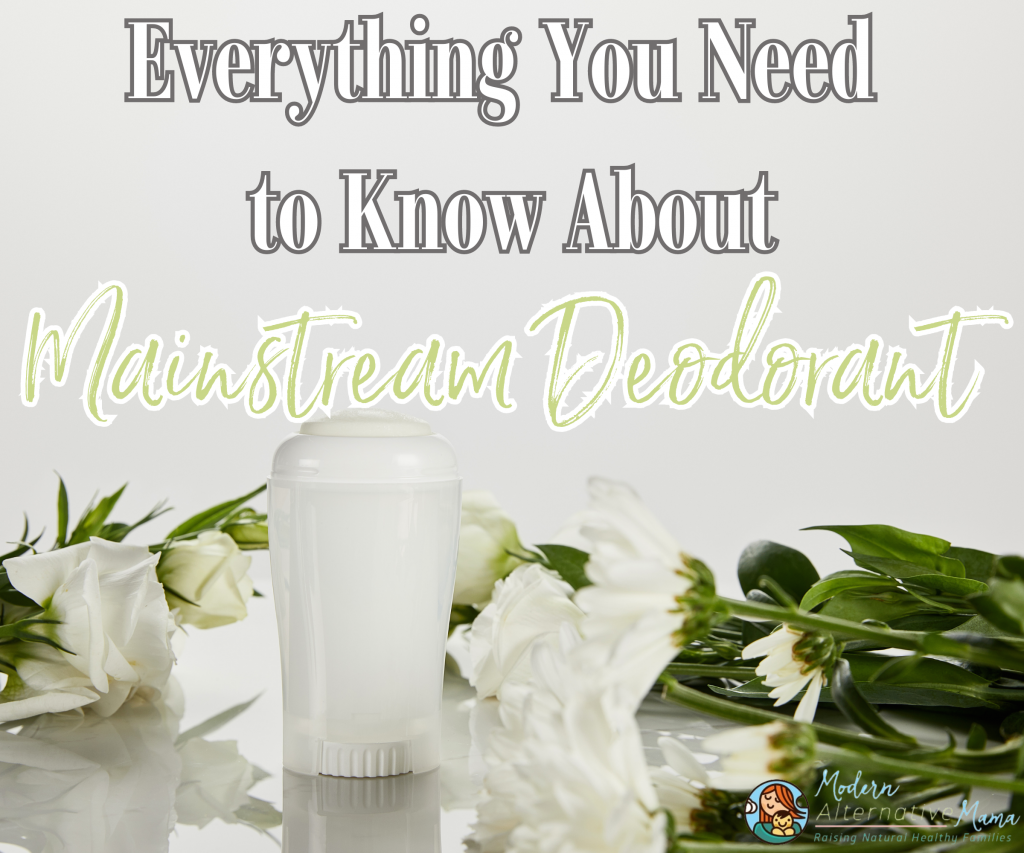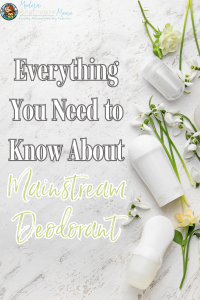All-natural deodorant alternatives have become a hot topic. I think many of us woke up when a study showed that 99% of breast cancer samples contained parabens, a common carcinogenic ingredient in most deodorants and antiperspirants (1). Ironically, many organizations dedicated to finding a cure for breast cancer have claimed there isn’t a link between antiperspirants and breast cancer.
Let’s talk statistics: 1 in 8 women in the United States will develop breast cancer. Additionally, in 2021 an estimated 281,550 new cases of invasive breast cancer were estimated to be diagnosed in women, 49,290 new cases of non-invasive (in situ) breast cancer, with an estimated 43,600 women who would die from breast cancer. That’s just in women, not counting the estimated 2,650 men expected to be diagnosed with breast cancer and approximately 530 that would die (2).
What if deodorant is the leading cause of breast cancer? It would make sense that these huge industries, like the National Cancer Institute, which received $574.9 million in funding in 2019 (3), wouldn’t want to lose their funding.
Toxic Ingredients Found in Mainstream Deodorant
Aluminum Chlorohydrate & Aluminum Zirconium Tetrachlorohydrex GLY
Aluminum chlorohydrate (in roll-ons and aerosols) and aluminum zirconium tetrachlorohydrex GLY (in solids) are compounds that plug the sweat glands, temporarily preventing perspiration. You may like the sound of that; no sweat means no stink, right? Well, no sweat also means no way for your sweat glands to filter toxins out of the body. When your body sweats, this is your body’s way of detoxing heavy metals, eliminating chemicals, and bacterial cleansing (3). Some research suggests that deodorants containing aluminum, which are applied frequently and left on the skin near the breast, may be absorbed by the skin and affect the hormone estrogen (4).
Talc
In its natural form, talc often contains asbestos, a substance known to cause cancers in and around the lungs when inhaled (5). Did you know in 1976, the Cosmetic, Toiletry, and Fragrances Association (CTFA), now known as the Personal Care Products Council, which is the trade association representing the cosmetic and personal care products industry, issued voluntary guidelines stating that all talc used in cosmetic products in the United States should be free from detectable amounts of asbestos according to their standards? This doesn’t mean that asbestos-free talc is safe, though! Studies that exposed lab animals (rats, mice, and hamsters) to asbestos-free talc in various ways have had mixed results, with some showing tumor formation and others not finding any (6).
Petroleum
Petroleum clogs pores and often causes acne breakouts and rashes. Petroleum has also been linked to estrogen dominance. Estrogen dominance is a common condition in which sufferers have a high ratio of estrogen, with little to no progesterone to balance its effects in the body (7).
Caprylyl Glycol
Caprylyl glycol is an alcohol derived from a fatty acid. It is a humectant that pulls water into the skin and helps to hold moisture into the skin. It can irritate some skin types, particularly those already sensitized or irritated (8).
Fragrances
Fragrances are derived from petrochemicals. These chemicals include benzene derivatives, aldehydes, phthalates, and many other known toxins capable of causing cancer, congenital disabilities, nervous-system disorders, and allergies. Learn more in our blog, Everything You Need to Know About Fragrance.
Dimethicone
Dimethicone is silicone-based, which you do not want. Why don’t you want a silicone-based product? Silicone-based products will form a barrier on top of your skin that can trap dirt, sweat, bacteria, sebum, dead skin cells, and other debris, and it can dehydrate your skin and interfere with cell renewal, among other things (9).
Non-Toxic Deodorant Alternatives
Thankfully, there are a few effective, natural alternatives you can choose from; here are some of my favorites:
Earthley’s Mineral Deodorant
Earthley’s Mineral Deodorant is a 100% natural deodorant that actually works! With absolutely no aluminum, baking soda, or artificial ingredients of any kind, you can be confident this Mineral Deodorant is safe and beneficial to your health. This deodorant uses natural magnesium chloride to detox your pits, arrowroot powder to keep you dry, and plant-based oils to gently nourish your sensitive underarm skin.
Earthley’s Mineral PLUS Deodorant
Earthley’s Mineral PLUS Deodorants like Mineral Deodorant, the PLUS version is all-natural with no aluminum, baking soda, or artificial ingredients. This version has added French green clay to provide lymphatic system support and extra protection while detoxing the skin to help fight stink!
Homemade Deodorant
Making your own deodorant is another option. Our Non-Toxic Deodorant Alternatives blog features several tried and true deodorant recipes. I’m sure one of them could become your go-to recipe.








I find it highly alarming that on a blog post about natural and DYI deodorant and the potential link of commercial deodorants to cancer, that a massive Secret deodorant ad heads the article. Was this intentional? Are you earning money from people clicking through that ad and profiting from the same toxic monster that this website offers alternatives to?
The ads you see are specific to your browser and search history. I see different ads than you do. =)
I see a lot about DYI deodorants, but what I really need is an antiperspirant… any DIY recipes for that? None of these recipes address any antiperspirant ingredients. Armpit sweat dripping down your arm is disgusting even if it is odorless. At work it is quite unprofessional and unsanitary. That is the single reason I have not tried a DIY version.
I think that ozone Layer deodorant is the only one that will work on very sensitive skin like mine, all these other ‘natural deodorants’ have baking soda or even propylene glycol. i break out. besides the ozone deodorant lasts about 6 months a stick
To be honest, I’ve never heard of ozone layer deodorant. I’ll have to look at it!